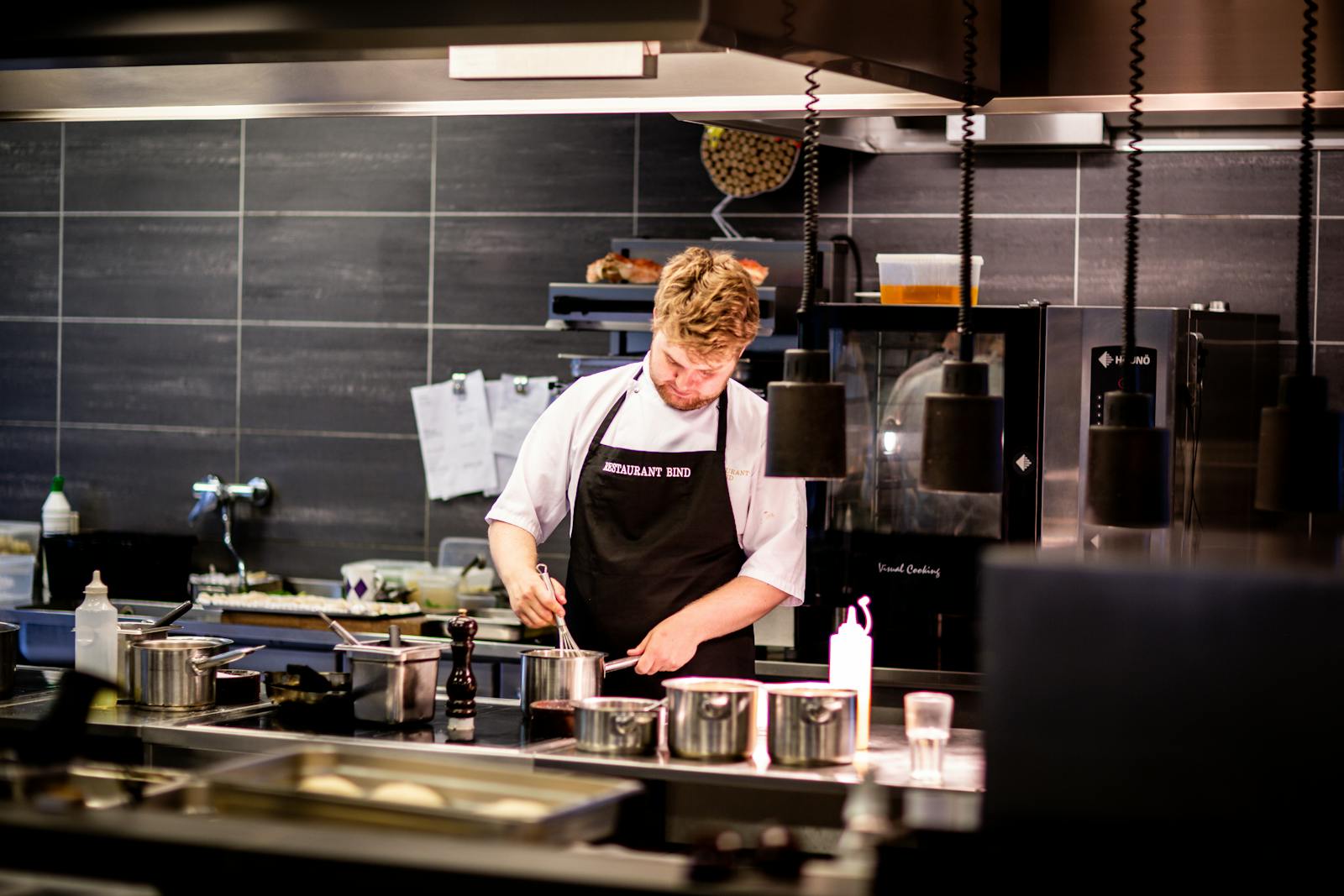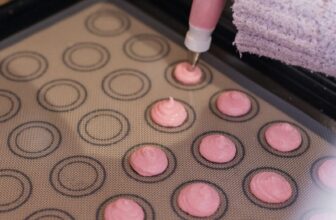
When it comes to kitchen gadgets, choosing between manual and electric options can significantly impact your cooking experience. Manual gadgets often offer simplicity and control, while electric ones bring efficiency and speed. Understanding the strengths and weaknesses of each type can help you make the best decision for your cooking style and needs.
As more people embrace cooking at home, kitchen gadgets have become essential for efficiency and creativity. Different tools can transform the way you prepare meals, whether you’re a seasoned chef or a beginner. In this article, you’ll discover how these gadgets stack up against each other, from ease of use to their impact on your culinary results.
By weighing the pros and cons, you can find the perfect balance between convenience and quality in your kitchen. Let’s explore the features that make each type of gadget unique, so you can equip your kitchen with the tools that suit you best.
Key Takeaways
- Manual gadgets provide hands-on control and personal touch in cooking.
- Electric gadgets save time and effort, making cooking faster.
- The right choice depends on your cooking habits and kitchen goals.
The Rise of Kitchen Gadgets
Kitchen gadgets have become a big part of cooking today. You’ll find a mix of old favorites and brand-new technology making cooking easier and more fun. The choices can be overwhelming, but knowing the journey of these tools can help you decide what’s best for your kitchen.
Evolution of Kitchen Appliances
Kitchen gadgets have come a long way. Early tools were simple and manual, like whisks and knives. Over time, appliances evolved into mechanical devices such as blenders and mixers.
Now you can find smart gadgets that connect to your phone. They automate tasks like measuring ingredients and even adjusting cooking times. This makes cooking faster and more convenient.
The shift towards electric tools isn’t just about speed. It’s also about precision in cooking. Devices like sous vide machines help you get perfect results every time.
Manual Versus Electric: Setting the Scene
When it comes to choosing between manual and electric kitchen gadgets, think about your cooking style. Manual tools, like manual can openers and handheld graters, can be satisfying to use. They often allow for greater control, which some cooks prefer.
On the flip side, electric gadgets like food processors and stand mixers take the hard work out of meal prep. They save time, especially if you cook a lot.
Consider your needs: Do you value simplicity and control, or do you want speed and convenience? Each type has its perks. With so many options out there, you can find what fits best in your kitchen.
Analyzing Manual Kitchen Gadgets
When it comes to kitchen gadgets, manual tools offer unique benefits and drawbacks. Understanding these can help you decide what works best for your cooking style.
Pros and Cons of Going Manual
Using manual kitchen gadgets has its ups and downs. On the plus side, they usually require no electricity. This means you can use them anywhere, anytime. They tend to be more affordable, too. Often, they are easier to clean and maintain.
However, there are some downsides. Manual tools can take more time and effort. They may require more skill, especially for tasks like chopping or kneading. Some people find them less convenient than electric options. You may find using them tiring if you cook a lot.
Popular Manual Gadgets Types and Uses
There are several popular manual kitchen gadgets that you’ll find helpful. Here are a few:
- Manual Whisk: Great for mixing eggs or sauces. It gives you control over the mixing speed.
- Box Grater: Perfect for shredding cheese or vegetables. You can use different sides for various textures.
- Food Mill: Excellent for pureeing fruits and vegetables. It helps you make smooth sauces or baby food.
These tools are often simpler than their electric counterparts. They offer a hands-on cooking experience that many enjoy.
Delving Into Electric Kitchen Gadgets
Electric kitchen gadgets offer a lot of help and convenience. They save time and effort in food preparation, making cooking easier and more enjoyable. Let’s explore some of the advantages and common types of electric gadgets you might find useful.
Advantages of Electric Convenience
Electric kitchen gadgets are all about efficiency. They often complete tasks faster than manual tools. For instance, an electric mixer can whip up batter in minutes, saving you the hassle of doing it by hand.
With features like programmable settings, many gadgets let you customize cooking times and temperatures. This means you can set it and forget it, perfect if you have a busy schedule.
Safety is another plus. Many electric gadgets come with built-in safety features, helping you avoid burns or cuts. Lastly, their consistency in performance makes your cooking results more reliable.
Common Electric Gadgets and Their Features
You’ll find a variety of electric gadgets that can make your kitchen life easier. Here are some popular ones:
- Electric Mixer: Great for baking, it comes with multiple speed settings and a variety of attachments for mixing, kneading, and whipping.
- Instant Pot: This multifunctional gadget can pressure cook, slow cook, steam, and even make yogurt. It’s a true kitchen workhorse.
- Electric Kettle: Perfect for tea or coffee lovers, it quickly heats water, saving you time compared to boiling it on the stove.
- Air Fryer: A healthier way to enjoy fried food, it uses hot air circulation for crispy results with less oil.
These gadgets not only make cooking easier but can also expand your culinary range.
Functionality and Efficiency
When choosing between manual and electric kitchen gadgets, both performance and energy efficiency play big roles. Understanding how these tools stack up can help you make smarter choices in the kitchen.
Performance Comparison
Manual kitchen gadgets often require more physical effort from you but can offer great control. For example, a manual whisk gives you the ability to adjust speed and pressure, which could lead to better mixing in some recipes.
On the other hand, electric gadgets can save you time and provide consistent results. An electric mixer can whip cream quickly and evenly. Plus, some electric gadgets come with various speed settings for different tasks, expanding their versatility.
Key points for performance:
- Control: Manual gives you direct input.
- Speed: Electric saves you time.
Energy Consumption and Savings
Energy usage varies greatly between manual and electric kitchen tools. Manual tools require no electricity, which means you save on energy bills while also being eco-friendly.
Electric gadgets do use power, but some are designed to be energy-efficient. For instance, using a slow cooker or an Instant Pot can be cost-effective since they consume less energy than an oven for long cooking times.
Things to consider:
- Manual gadgets: Zero energy costs.
- Electric appliances: Convenience vs. energy savings.
By evaluating these factors, you can pick the right gadget that balances performance with energy efficiency.
Usability and User Experience
When choosing between manual and electric kitchen gadgets, usability and user experience play a big role. You want tools that make cooking easier and more enjoyable. Let’s break down a couple of important areas to consider.
Ease of Use Assessment
Manual gadgets often require more effort to operate. You might find that they need physical strength or technique to use effectively. However, many people enjoy this hands-on approach for its simplicity.
Electric gadgets typically offer convenience. Just press a button, and you’re good to go! This can be a time-saver, especially if you’re in a hurry. Still, think about the learning curve for using complex features or settings.
Pros of Manual Gadgets:
- Control over the process
- No need for electricity
Pros of Electric Gadgets:
- Fast operation
- Less physical effort
Maintenance and Durability
When it comes to maintenance, manual gadgets are usually easier to clean, but they may need more frequent replacement. They often have fewer parts that can break, so they might last longer in some cases. You can easily rinse them off or toss them in the dishwasher.
Electric gadgets, on the other hand, require more care. You need to manage cords, check batteries, and occasionally replace parts. They can be more complicated to clean, especially with electronics involved.
Considerations for Durability:
- Manual tools may last depending on material.
- Electric gadgets should be checked regularly for wear.
Keeping these factors in mind will help you make the best choice for your cooking needs.
Economic Considerations
When deciding between manual and electric kitchen gadgets, it’s important to think about the financial impact. Costs can vary widely, affecting your budget in both the short and long term.
Cost-Benefit Analysis
Start by examining the upfront costs. Electric gadgets often have higher initial prices compared to manual ones. For example, a high-quality electric mixer can cost around $300, while a manual mixer might be only $30.
Next, consider the energy usage. Electric gadgets will add to your utility bill, especially if used frequently. A simple cost breakdown can help:
- Manual Gadgets: Lower cost, no electricity needed
- Electric Gadgets: Higher purchase price, ongoing energy costs
Look for features that save time or provide better results. Sometimes a higher price means better quality and longer life, making it worth the investment.
Long-Term Value Projection
Think about how often you’ll use these gadgets. If you cook every day, an electric gadget might save you significant time. This makes it more valuable over time.
Consider maintenance and durability too. Some electric gadgets last longer and require less effort to clean.
When you multiply the cost of manual gadgets needing replacement every few years, it might not be the best choice. Here’s what to weigh:
- Longevity: Electric gadgets may outlast manual ones.
- Maintenance Costs: Factor in repairs or replacements.
- Savings in Time: More efficient cooking can bring saved effort.
Choosing wisely can lead to better value in the kitchen, fitting with your lifestyle and budget.
Environmental Impact
When choosing between manual and electric kitchen gadgets, it’s essential to consider how each option affects the environment. From energy consumption to material use, both have their own ecological footprints. Let’s dive into how these gadgets stack up against each other in terms of their environmental impact.
Eco-Friendliness of Manual Gadgets
Manual kitchen gadgets are often seen as more eco-friendly. They don’t require electricity, which means you aren’t contributing to energy consumption each time you use them. Tools like whisks, peelers, and hand graters have a minimal environmental footprint since they are usually made from sustainable materials.
Many manual gadgets also last a long time, reducing waste. You can often find these items built to last, which means less frequent replacements. Durable options can save resources and money in the long run.
Keep in mind that maintenance is key. Proper care of your hand tools can extend their life, making them even more environmentally friendly. By choosing high-quality manual gadgets, you’re making a commitment to sustainability in your kitchen.
Electric Gadgets and Their Carbon Footprint
Electric gadgets have a more significant environmental impact due to their energy usage. When you plug in devices like food processors or electric mixers, they draw power, often from non-renewable sources. Even energy-efficient models still contribute to greenhouse gas emissions during their use.
Consider the materials involved, too. Many electric gadgets are made from plastic or metals that can contribute to pollution if not recycled correctly. The production process for these items often involves harmful chemicals and energy-intensive methods.
However, some newer models focus on energy efficiency and sustainability. For instance, appliances that use renewable energy or are designed to use less power can lessen their overall impact. Be mindful of what you choose; selecting energy-efficient models can still help reduce your carbon footprint in the kitchen.
Culinary Results and Quality
When choosing between manual and electric kitchen gadgets, it’s important to consider how they affect what you cook. Each type can impact not just the flavor, but also the overall experience in the kitchen. Here’s how they compare.
Taste and Texture Comparisons
Manual gadgets usually give you more control over the process. For example, using a hand whisk can create a different texture in whipped cream compared to an electric mixer. The speed and consistency of mixing play major roles in how airy your whipped cream becomes.
Electric gadgets often provide uniform results. An electric blender can puree soup more smoothly than you might achieve with a hand blender. Smooth textures in sauces can enhance the overall flavor, making dishes more enjoyable.
A table to think about:
| Gadget Type | Taste Impact | Texture Quality |
|---|---|---|
| Manual | More control, personal touch | Varies based on technique |
| Electric | Consistent and uniform | Generally smoother |
Influence on Cooking Methods
Manual kitchen tools often encourage slower, more thoughtful cooking. You might spend extra time chopping vegetables by hand or mixing dough with a wooden spoon. This method can make you engage more with your ingredients.
On the other hand, electric gadgets can speed up meal prep. With an electric food processor, you can shred cheese or chop veggies in seconds. This efficiency can help you explore new recipes without the fear of time constraints.
Both methods have their perks. If you love hands-on cooking, you might prefer manual tools. If speed and convenience are your goals, electric gadgets might be the way to go.
The Verdict
When it comes to choosing between manual and electric kitchen gadgets, each type has its strengths and weaknesses. Your decision will depend on factors like convenience, skill level, and kitchen space.
Summarizing the Comparison
Manual gadgets are typically more affordable and require no electricity. They can give you better control over your cooking process. For example, a hand-cranked food mill allows you to adjust how finely you want to puree your food.
On the flip side, electric gadgets save you time and effort. For instance, an electric mixer can whip cream in seconds. Plus, some electric tools come with advanced features, like timers and smart settings, which can be quite handy.
Final Recommendations
If you enjoy cooking and have the time, consider sticking with manual gadgets for tasks like chopping or mixing. They can help you build cooking skills and offer a more hands-on approach.
If convenience is key for you, electric gadgets are your best bet. Look for tools that have solid reviews and proven performance, like an Instant Pot, which can nail multiple cooking methods.
Ultimately, think about your cooking style and choose the gadgets that suit your kitchen needs the best.
Frequently Asked Questions
When deciding between manual and electric kitchen gadgets, you might have a lot of questions. Each type has its own benefits and drawbacks that can affect your cooking experience. Here are some common questions to help you understand the differences.
What are the pros and cons of using electric gadgets compared to manual ones in the kitchen?
Electric gadgets often save time and effort. They can help you chop, mix, or cook with less physical work. However, they may be more expensive and require outlet access.
Manual gadgets are usually cheaper and simpler to use. They also work during power outages. Yet, they may take more time and effort for some tasks.
How do manual kitchen gadgets compare to electric ones in terms of durability and maintenance?
Manual gadgets tend to last longer since they have fewer parts that can break. You usually just need to wash them after use. Electric gadgets, though convenient, may need more maintenance due to their motors and electronics.
If something goes wrong with an electric gadget, it might be harder and more costly to fix. Manual tools are typically easy to repair or replace.
What impacts do electric kitchen gadgets have on cooking times and food preparation compared to manual tools?
Electric gadgets can speed up food preparation significantly. For instance, food processors can chop veggies in seconds, while a knife takes much longer.
However, for simpler tasks, manual gadgets may be just as quick. A hand whisk can easily whip cream without the need for a mixer.
Can electric kitchen gadgets significantly enhance culinary efficiency over manual tools?
Yes, electric gadgets often boost efficiency in larger meals or complex recipes. They handle repetitive tasks quickly, letting you focus on other parts of cooking.
Nonetheless, for small batches or basic tasks, manual tools can perform just as well and even allow for more control.
In terms of energy consumption, how do electric kitchen gadgets measure up against manual ones?
Electric gadgets use energy while operating, which can add to your electricity bill. Using them for long periods can really increase consumption.
Manual gadgets, on the other hand, don’t use electricity, making them more energy-efficient especially for quick tasks.
Are there specific tasks where manual kitchen gadgets outperform electric ones?
Yes, some tasks benefit from the precision and control of manual gadgets. For example, tasks like zesting or peeling may be easier with a hand tool.
Additionally, for small quantities or delicate ingredients, it may be simpler to use manual methods to avoid over-processing.






